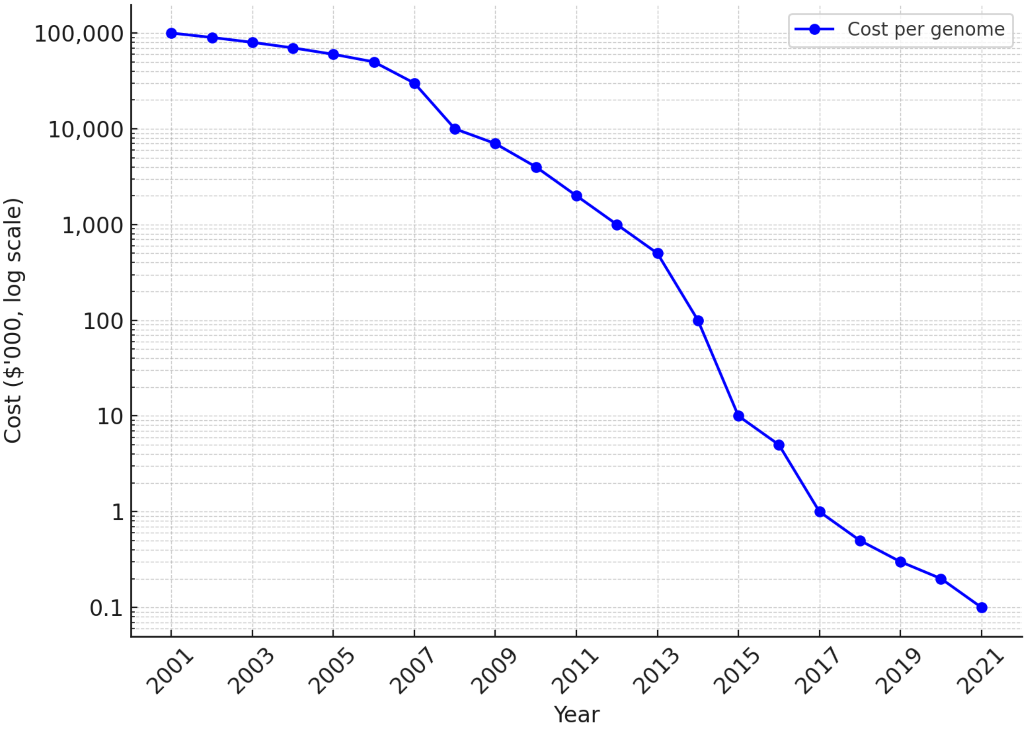
Innovating Science With Bioinformatics and Biotech Solutions
Solid Logix focuses on enabling scientific discovery and promoting biotechnology through innovative software and data-driven solutions. Our expertise bridges the gap between complicated biological difficulties and transformative insights, assisting enterprises in achieving ground-breaking outcomes.
Our Expertise
We’ve developed expertise across key areas, enabling us to deliver innovative solutions with rapid and impactful results.
Data Analysis & Visualization
Unlock the power of complex datasets with customized analytics and visualizations.
Genomic & Proteomic Solutions
Empowering advancements in genomics and proteomics with tailored tools.

Automation for Research Labs
Streamline workflows with advanced automation technologies.
Precision Medicine
Developing solutions for personalized healthcare initiatives.
Biotech Software Development
Create robust software systems to support biotech organizations in innovation, efficiency, and growth.

Advancing Science Through Bioinformatics Excellence
Delivering software solutions to accelerate research, streamline data analysis, and facilitate breakthroughs that shape the future of biotechnology.
Our Solutions and Tools
When exploring novel questions about fundamental biology, health, and disease, our researchers sometimes encounter challenges where the necessary tools are unavailable. In such instances, we innovate by creating new tools or adapting existing ones to enable groundbreaking discoveries.

Iterative Development with Rapid Prototyping
We employ agile cycles to quickly prototype and test bioinformatics tools, incorporating feedback from researchers and end-users at every stage. This ensures tools are fine-tuned to meet scientific needs efficiently, reducing the time from concept to impactful discovery.
Continuous Integration of Emerging Tech
Our approach prioritizes the use of AI/ML algorithms, high-performance computing, and cloud-native solutions tailored for biotech challenges. This allows us to process and analyze complex biological data at scale, enabling breakthroughs in areas like precision medicine, genomics, and epidemiology.
Automation of Data Processing Pipelines
We emphasize automating complex bioinformatics workflows, such as sequencing analysis or molecular modeling. By reducing manual intervention, we minimize errors and free researchers to focus on generating insights, ultimately accelerating the pace of discovery and innovation.
Tech-First Agile Approach

Our Impact Areas
Leveraging our expertise, we’ve driven meaningful advancements in these key areas, delivering impactful results and shaping the future of science, technology, and innovation.

Genomic Research
Advancing the understanding of genetic variation and disease through innovative bioinformatics solutions.

Disease Surveillance
Supporting public health initiatives with real-time data insights and monitoring tools.

Clinical Trials
Enhancing clinical research with advanced analytics and streamlined data integration.

Drug Development
Accelerating pharmaceutical innovation with advanced data analysis and precision medicine solutions.

Agricultural Biotechnology
Developing innovative solutions to improve crop resilience and agricultural productivity.

Personalized Medicine
Leveraging genomics to create targeted therapies and improve patient outcomes.
The Adancement of Biotech
Solid Logix has consistently embraced innovation to remain at the forefront of the rapidly advancing biotech industry. By integrating cutting-edge technologies like AI-driven data analysis, high-performance computing, and cloud-based solutions, we empower researchers and organizations to tackle complex challenges. Our commitment to continuous learning and collaboration with industry leaders ensures that we stay ahead of emerging trends, delivering software solutions that drive breakthroughs in healthcare, bioinformatics, and life sciences. Solid Logix doesn’t just adapt to change—we lead it, providing tools that accelerate progress and transform possibilities into realities.
Lowered Costs
Cost of sequencing a human-sized genome.

Reduced Sequencing Time
Time to sequence a human-sized genome.

Increased Genome Data
Genomes deposited in GenBank repository.

Timeline of Genome Sequencing Advancements
The Human Genome Project, which began in 1990, produced a "draft" human genome sequence over a 15-month period from April 1999 to June 2000. The estimated cost for generating that initial "draft" was approximately $300 million worldwide.
Source: National Human Genome Research InstituteThe introduction of next-generation sequencing technologies reduced both the time and cost of sequencing. By 2008, sequencing a human genome using these technologies cost only a few hundred dollars, a significant decrease from earlier years.
Source: National Human Genome Research InstituteTechnological advancements continued to accelerate sequencing capabilities. By the mid-2010s, sequencing a human genome could be completed in a matter of days.
With the advent of third-generation sequencing technologies, such as Oxford Nanopore and PacBio, sequencing times have further decreased. As of 2024, sequencing a human genome can be accomplished in less than a day, with some technologies achieving this in just a few hours.
These advancements have not only reduced sequencing times but also significantly lowered costs, making genomic sequencing more accessible for research and clinical applications.
Note: The specific timeframes mentioned are approximate and can vary based on the sequencing technology and protocols used.